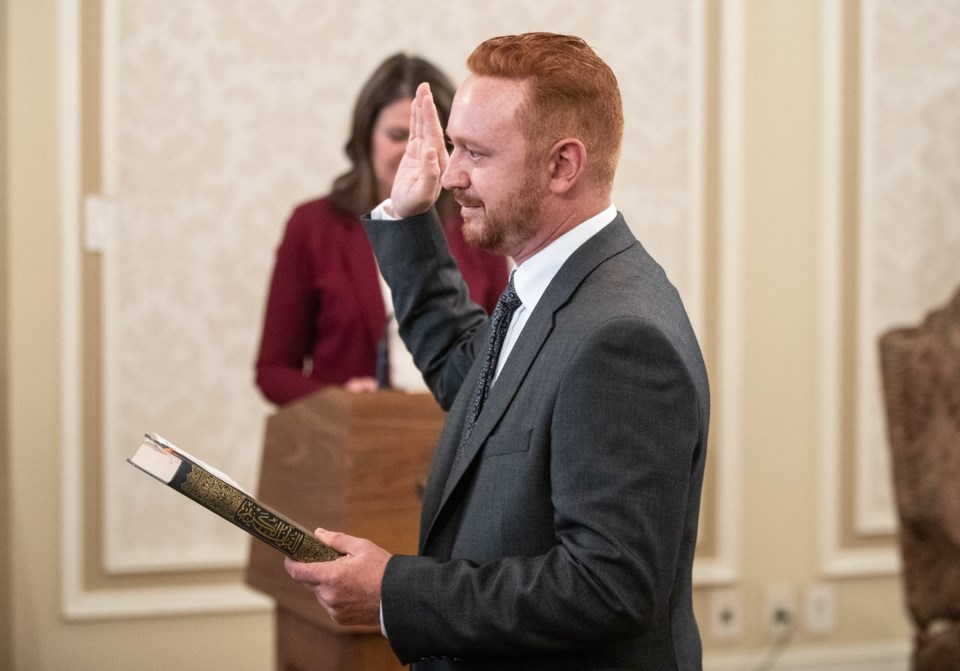EDMONTON — Alberta's surging population has the provincial government planning to add more seats to the legislature.
Justice Minister Mickey Amery introduced a bill Tuesday that calls for the creation of two additional electoral districts to bring the province's seat total to 89 ahead of the 2027 general election.
There could also be widespread boundary changes, as the bill, if passed, would remove a provision that requires riding boundaries respect municipal boundaries as a guiding principle.
When asked by reporters if removing the provision is an attempt to dilute urban ridings with rural voters, who historically favour conservative representatives, Amery said the United Conservative Party government is aiming for manoeuvrability.
"A number of rural or semi-rural communities are very much closely connected to their urban cities that they're nearby," Amery said.
"The idea here is to build the flexibility for the commission to identify, for example, communities of interest, communities that share common transportation routes or common themes."
Amery said the decision to increase seats is driven by Alberta's recent surge in population, which is now at almost five million.
Government figures show that nine of Alberta's current 87 constituencies are overpopulated, and Amery said having two additional representatives in the legislative assembly would improve voter representation.
Five of those overpopulated districts are in Calgary, three are in Edmonton, and the last is Airdrie-Cochrane, which covers all of Cochrane — a town that has seen its population grow by over 40 per cent since 2016.
Provincial rules dictate that the population of each constituency must be within 25 per cent of the average population of all electoral districts, though some exceptions are made for a couple rural districts where meeting that target isn’t feasible.
Should the bill pass, the government would establish a five-member commission to study and recommend where the boundaries of existing constituencies should be changed to create the two new districts.
Even if the bill is defeated, Premier Danielle Smith's government would still need to establish a commission to review the electoral districts before the next election.
The commission would be made up of two members appointed by the Opposition NDP and three, including a committee chair, appointed by the United Conservatives.
NDP justice critic Irfan Sabir said he expects the UCP to go through the boundary redesign in good faith.
"We expect that it's a fair process and these new ridings are given in the areas where we see the most population and growth pressures, and these are not just used for any political gains," Sabir said.
The last election in 2023 saw results unfold along geographic lines, with the NDP taking Edmonton, the UCP dominating in rural areas and the two sides effectively splitting the key battleground of Calgary.
Political science professor Lisa Young said she isn't surprised the government is looking to expand the legislature, as not doing so ahead of the necessary district review might have meant the loss of rural districts in favour of new urban ones where the population growth is being seen.
"It gets the government out of an immediate political problem," said Young with the University of Calgary.
"If they didn't, they were going to have to deal with a really messy situation that would have reduced the number of rural ridings, and that would have created problems inside UCP caucus."
This report by The Canadian Press was first published Nov. 5, 2024.
Jack Farrell, The Canadian Press



